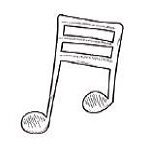STRATEGY FOCUS
Anticipation Guide
PURPOSE
An Anticipation Guide is a pre-reading activity most often used to activate students’ prior knowledge and to generate curiosity about a given topic. Anticipation guides may also be used as an after reading activity by providing students with opportunities to revise their thinking. Students may be asked to correct any errors and to find evidence to support or counter each statement presented in the guide.

PROCESS
- Identify prior knowledge, common misconceptions and key points related to the topic or content to create four to six statements that challenge or support students’ prior knowledge, beliefs and experiences.
- Before asking students to read the informational text, instruct students to react to each statement on the Anticipation Guide.
- Have students read the text, citing relevant evidence from the text that supports their thinking in the center column on the Anticipation Guide.
- After reading, provide time for students to return to the Anticipation Guide to respond again to the statements.
- Invite students to take note of any changes in their thinking as a result of reading the text, discussing the evidence that supported or or disputed claims in the Anticipation Guide.
PROBING QUESTIONS
CONSIDERATIONS
- What did you notice about your thinking as you read the text? (i.e., Before I thought…and now I think…)
- What new information did you learn about this topic?
- What new questions do you have about this topic?
- This strategy works best when used with informational text.
- Use a dichotomous response format such as: agree/disagree, true/false, likely/unlikely
- Facilitate class discussion around each Anticipation Guide statement so that students share and discuss their ideas and thinking with peers.
- If students need scaffolding of the text, consider breaking it down into smaller chunks.
CONTENT APPLICATIONS
 ENGLISH
ENGLISH
LANGUAGE ARTS
Before reading Night by Elie Wiesel, students respond to statements about the Holocaust to indicate prior knowledge, and then again after reading for affirmation or revision of their thinking.
 VISUAL & PERFORMING ARTS
VISUAL & PERFORMING ARTS
Before starting visual art unit, students respond to statements about form, structure, material, media, and art-making approaches.
![]()
SCIENCE
Before reading about a scientific study on matter cycling and energy flows in a closed system, students respond to statements about how long a human can survive in a closed system with only plants as pre-reading activity and then again to consider the role of photosynthesis and cellular respiration as post-reading.
![]()
SOCIAL STUDIES
Before starting a unit on what makes a civilization complex, students respond to statements of common factors such as politics, religion, environment, etc. that contribute to the complexity of civilizations.
![]()
WORLD LANGUAGES
When studying a unit on Latin America and the US, students respond to statements as a pre-reading activity to indicate prior knowledge and then again after to consider affirmation or revision.
 HEALTH & PHYSICAL EDUCATION
HEALTH & PHYSICAL EDUCATION
Before learning about personal and social behaviors that exhibit respect for self and others, students respond to statements about sportsmanship, etiquette, safety, teamwork, cooperation and conflict resolution.
![]()
CAREER & TECHNICAL EDUCATION
In carpentry, students respond to statements focused on skills used to build a structure as a pre-reading activity to indicate prior knowledge and then again after to consider affirmation or revision.
![]()
MATHEMATICS
Before starting a lesson on the Quadratic Formula, students respond to statements about how to solve a problem, what strategies or tools might work best, and if a solution exists for quadratic equations.
Reproducible

